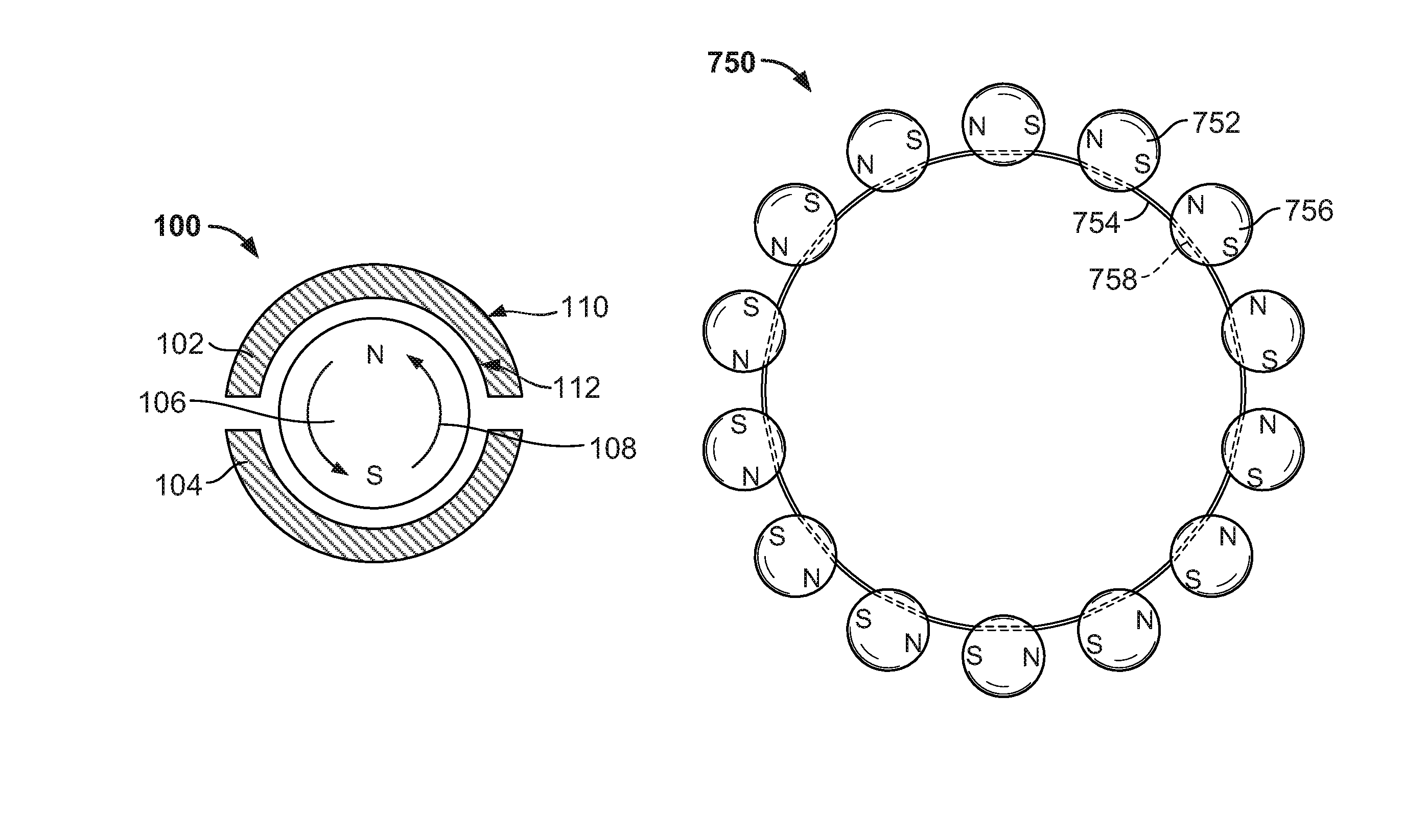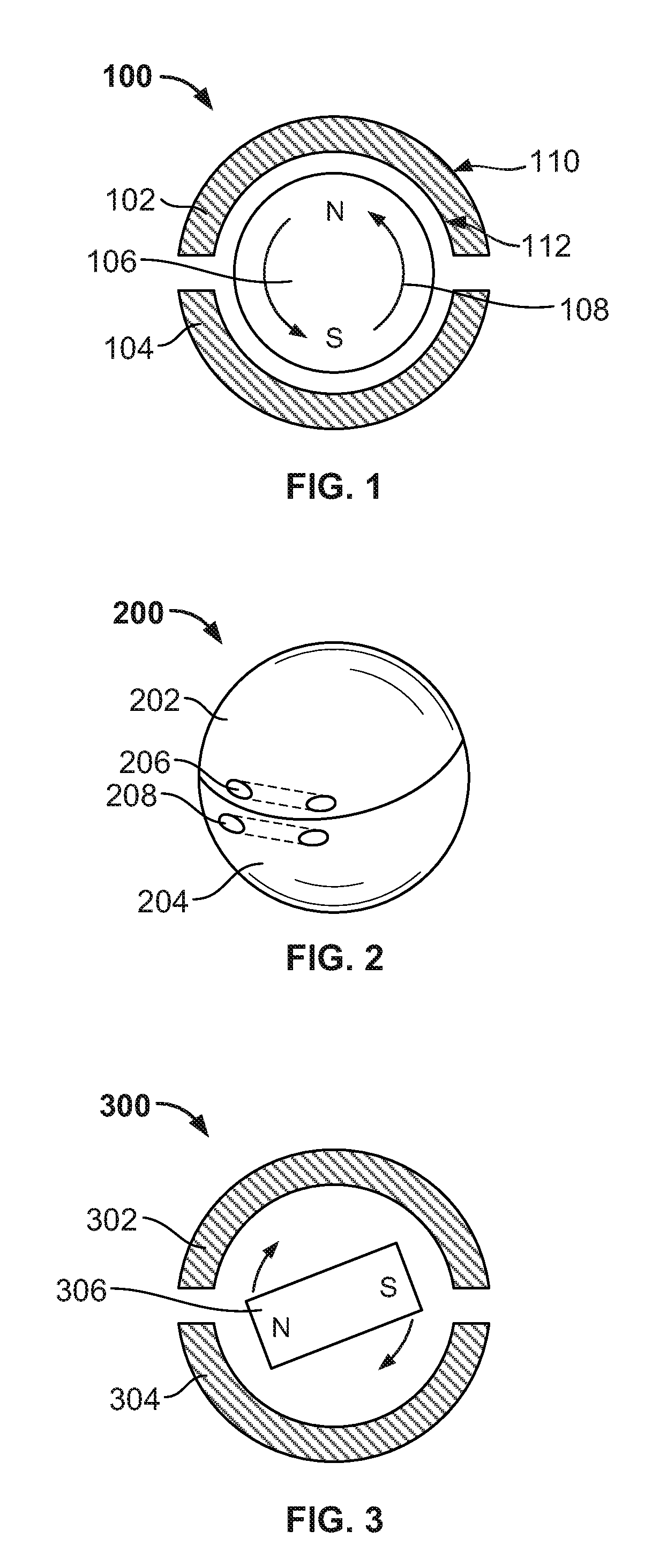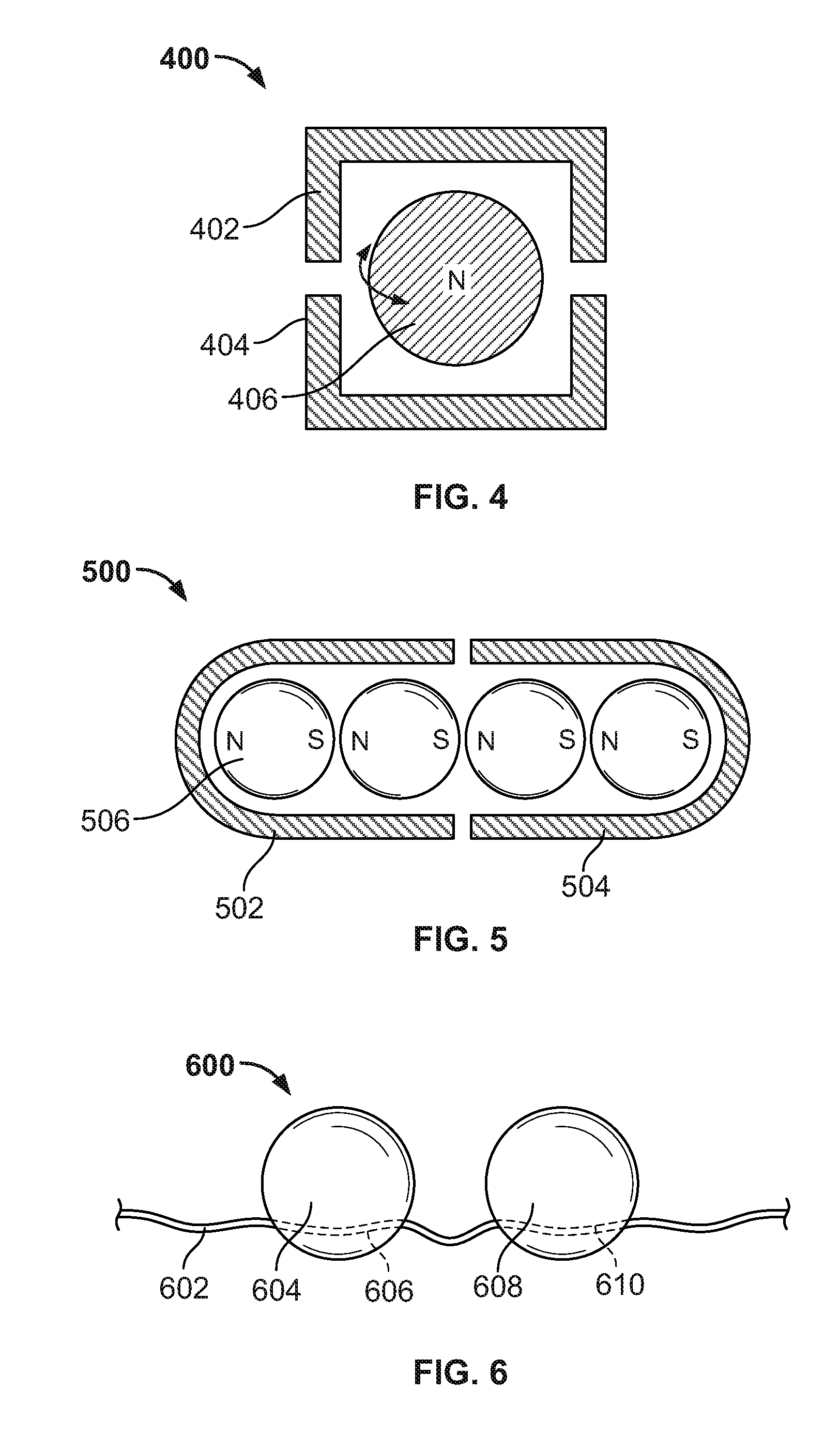Medical implant with floating magnets
- Summary
- Abstract
- Description
- Claims
- Application Information
AI Technical Summary
Benefits of technology
Problems solved by technology
Method used
Image
Examples
Embodiment Construction
[0030]Systems and methods are described for the use of “floating” magnetic elements in medical implants. The medical implant includes a series of housings, which encapsulate the magnetic elements. Each housing allows its respective magnetic element or elements to rotate freely in order to align with the magnetic fields of magnetic elements in adjacent housings of the medical implant or magnetic fields external to the medical implant. The housings are connected by a flexible linkage, which engages each of the housings, but which does not impair the rotation of the magnetic elements within the housings. The flexible linkage may also accommodate the various circumferential sizes associated with the medical implant.
[0031]The medical implant may include a pressure-mediated device placed around a patient's tissue structure, body organ, or body lumen to control the rate of fluid, solid, or other content passage through the tissue structure. The tissue structure may be, for example, the eso...
PUM
 Login to View More
Login to View More Abstract
Description
Claims
Application Information
 Login to View More
Login to View More - R&D
- Intellectual Property
- Life Sciences
- Materials
- Tech Scout
- Unparalleled Data Quality
- Higher Quality Content
- 60% Fewer Hallucinations
Browse by: Latest US Patents, China's latest patents, Technical Efficacy Thesaurus, Application Domain, Technology Topic, Popular Technical Reports.
© 2025 PatSnap. All rights reserved.Legal|Privacy policy|Modern Slavery Act Transparency Statement|Sitemap|About US| Contact US: help@patsnap.com



